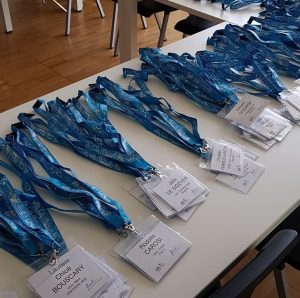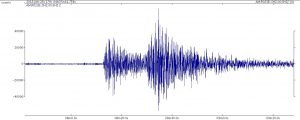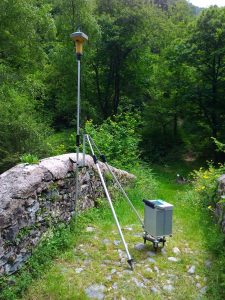Thanks to a dedicated team lead by Simon Hiscox, there are three videos available from the recent HKT2018 conference. The highlight is the invited talk of Peter Molnar about The Growth of the Tibetan Plateau, now online in full length and resolution, both here below and on YouTube.
News
Post-HKT and Tibet low-velocity zones
The 33rd HKT conference is over and we keep a great memory of this event! A final, post-conference message is yet to come, with the group photo, the keynote speech’s video, etc.
Following the advice of one of the participants and a good colleague, I here share the PDF version of a 7-year old article that is not so visible, showing that seismic low-velocity zones in South Tibet are present in spots, and do not form a continuous layer.
The HKT2018 conference is coming up
After more than a year preparation, the 33rd Himalaya-Karakorum-Tibet workshop is at the doorstep. From Monday to Wednesday next week (Sept. 10-12) more than 130 researchers will present ca. 45 talks and ca. 85 posters on the structure, dynamics and natural hazards of the HKT region. The invited keynote speaker is Peter Molnar (U. Colorado), who will talk about the Growth of the Tibetan Plateau. About 35 people will also go on a 3-day field excursion in the Western Swiss Alps before the workshop. Full information can be found at the HKT2018 website. We look forward to host the event and the participants.

Seven years in Bhutan
Are earthquakes and faults close to each other in Switzerland?
General knowledge of geoscientists holds that earthquakes occur on faults, and faults are created by brittle failure. But how good is the spatial correlation between the two datasets? This is the question we have analyzed from various sides in our freshly published paper.
Bhutan Himalaya – Shillong Plateau seismotectonics paper
Our work on the seismotectonic interaction between the Bhutan Himalaya and the Shillong Plateau has just been published in Tectonophysics. The results point to a weaker interaction between thrust faults in the two regions than previously suggested. Earthquakes on these thrusts mostly affect strike-slip faults connecting the two regions, so there is no “stress shadow” effect from the 1897 earthquake on the Bhutan Himalaya.
EASI receiver function results published
The first paper of the Eastern Alpine Seismic Investigation (EASI) project, discussing the crustal structure using various approaches based on receiver functions, has been accepted for publication in Tectonophysics. The final version is now online. EASI is an AlpArray Complementary Experiment, carried out by IG Prague, U Vienna, ETH Zurich and U Lausanne. EASI data will be open to the public in Autumn 2018.
Local earthquake recorded by Raspberry Shake in Nepal
An earthquake in the early morning in central Nepal is recorded by the Raspberry Shake 1D seismometer installed in a school in western Nepal. The epicenter is ~150 km far from the school, where P and S waves are clearly visible as in the following waveform. This seismometer belongs under the framework of ‘seismology-at-school in Nepal’ program, which is installed in May 2018 and conducting by Institute of Earth Science, the University of Lausanne with the aim of education and crowdsourcing.

AlpArray interview on RTS
This week the program CQFD on RTS has scheduled a detailed discussion on project AlpArray. You can listen to the interview by Silvio Dolzan with György Hetényi here.
Ivrea gravity fieldwork
In the first weeks of June a combined gravity and seismology field campaign was lead by Matteo Scarponi in the Ivrea-Verbano zone, helped by a changing team for new energy input. The environmental conditions were demanding: heat, thunderstorm, rain, hale, fog, snakes, scorpions, ticks, landslide, fallen tree, and other “surprises”. Luckily we’ve also met helpful people, could do a few key measurements during short hikes, and seen nice landscapes.

